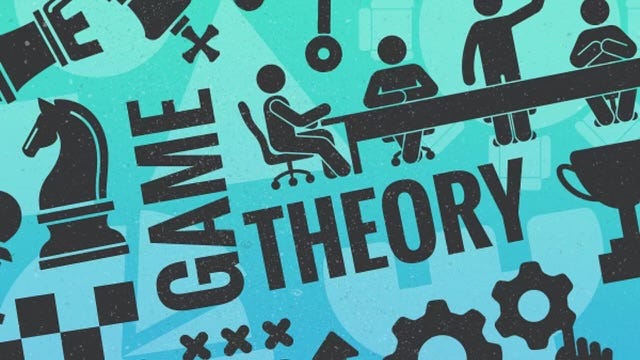The Game Theory: Unraveling the Mathematics of Strategic Thinking
Explore game theory basics: Nash equilibrium, prisoner’s dilemma, and various types of game theories. Ready for strategic decision-making insights?
By Ritaj Asiri
The Basic Concepts of Game Theory:
Game theory revolves around analyzing the choices made by individuals, referred to as players, in a given situation, known as a game. The core elements of a game include players, strategies, and payoffs.
- Players are rational decision-makers who aim to maximize their own utility or payoff.
- Strategies represent the possible courses of action available to players.
- payoffs quantify the outcomes or rewards associated with different combinations of strategies chosen by the players.
It’s important to remember that According to game theory, the actions and choices of all the participants affect the outcome of each. It's assumed players within the game are rational and will strive to maximize their payoffs in the game.
The types of game theories:
There are many types of game theories, such as symmetric/asymmetric, simultaneous/sequential, and so on, but the most common one are cooperative and non-cooperative game theories cooperative and non-cooperative game theories. They are two fundamental branches of game theory that analyze different types of strategic interactions between decision-makers.
- Non-Cooperative Game Theory:
It examines situations where players make decisions independently, without the ability to form binding agreements or enforce cooperation. In this framework, each player aims to maximize their own individual payoff.
Nash Equilibrium:
The Nash equilibrium provides the solution concept in a non-cooperative game. It’s an important concept referring to a stable state in a game where no player can gain an advantage by unilaterally changing a strategy, assuming the other participants also do not change their strategies. And It’s named after John Nash, who received the Nobel Prize in 1994 for his work.
- Cooperative Game Theory:
On the other hand, cooperative game theory focuses on situations where players can form coalitions and negotiate binding agreements. It explores how rational players can cooperate and distribute the joint benefits among themselves. In it players aim to achieve outcomes that are considered fair and efficient.
The Prisoner's Dilemma:
It’s the most well-known example that game theory analyzes. Imagine 2 criminals arrested for a crim. Prosecutors have no hard evidence to convict them. However, to gain a confession, officials remove the prisoners from their solitary cells and question each one in separate chambers. Neither prisoner has the means to communicate with the other. Officials present four deals, often displayed as a 2 x 2 box.
1. If both confess (defect), they both go to jail for 5 years.
2. if neither confesses (cooperate), they both go to jail for 3 year.
3. if prisoner A confesses, while prisoner B does not, prisoner A goes to jail for 1 year and prisoner B goes to jail for 10 years.
4. if prisoner B confesses, while prisoner A does not, prisoner B goes to jail for 1 year and prisoner A goes to jail for 10 years.
In the end, game theory helps us understand how people make decisions and work together strategically. It gives us insights into cooperation, human behavior, and solving complex problems. Game theory is a useful tool that can be applied in various fields in our dynamic world.



